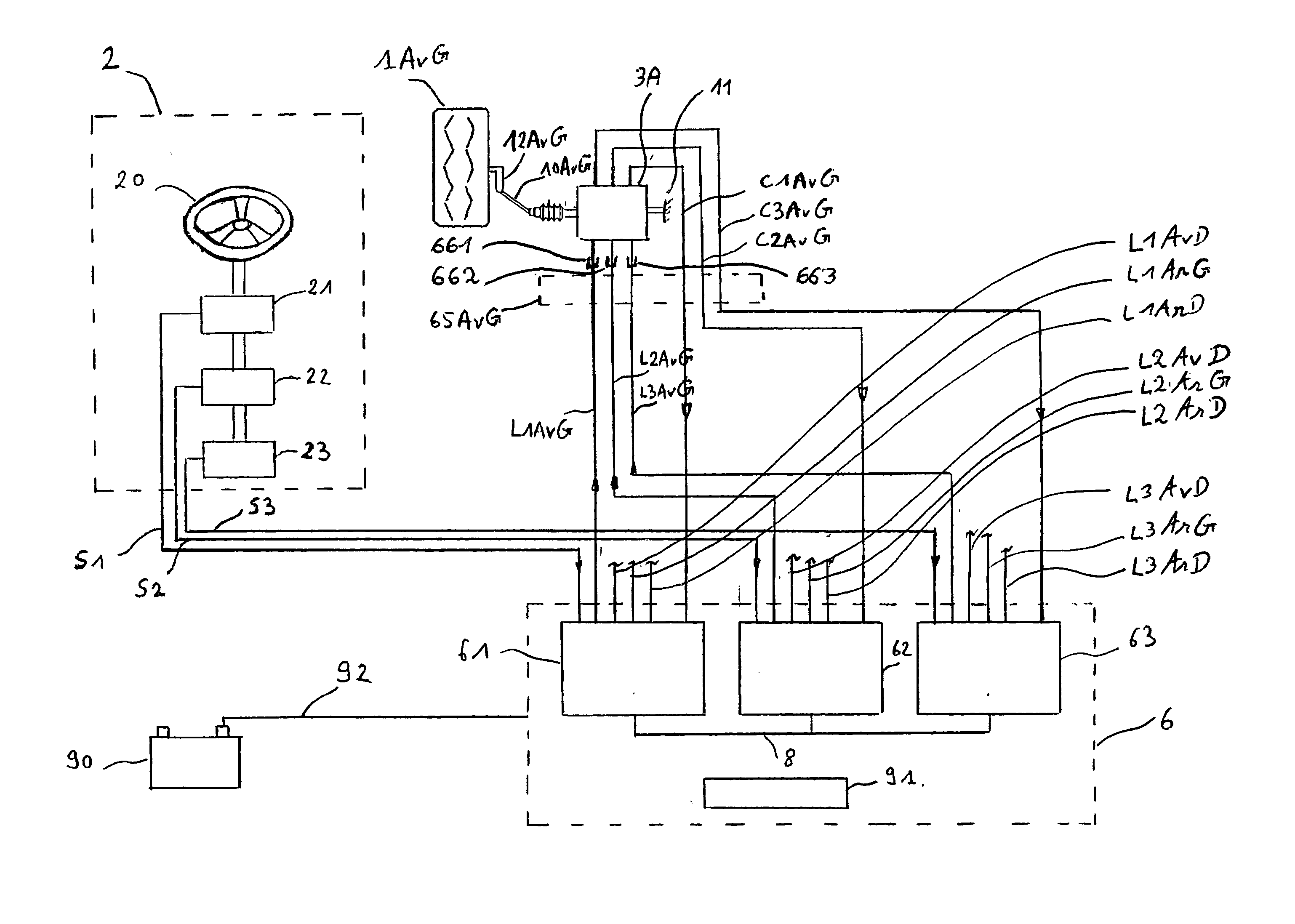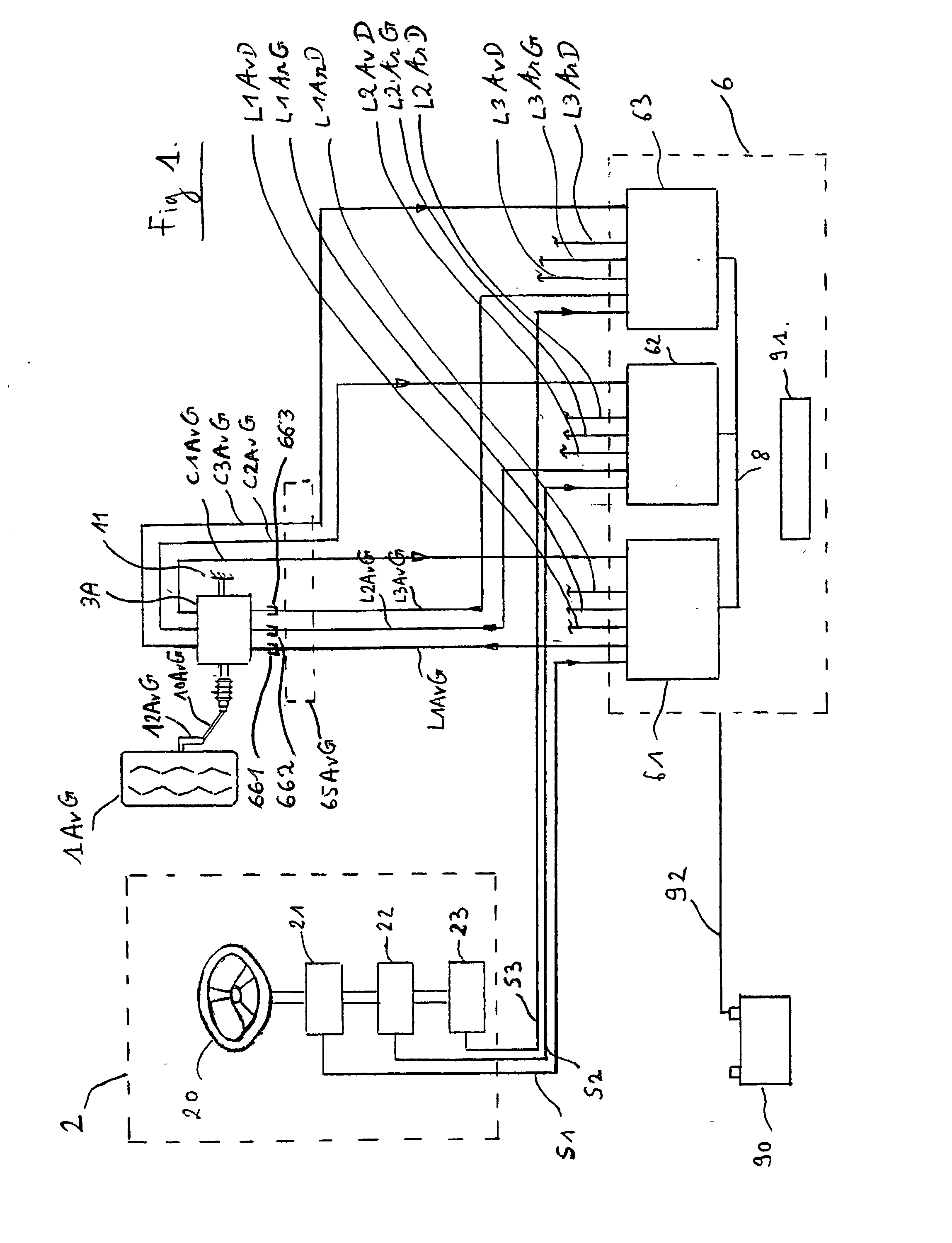Electrical steering for vehicle, with triple redundancy
a technology of electric steering and vehicle, applied in the direction of non-vehicle mounted steering controls, mechanical energy handling, transportation and packaging, etc., can solve the problem of redundant architecture of all electrical components used
- Summary
- Abstract
- Description
- Claims
- Application Information
AI Technical Summary
Benefits of technology
Problems solved by technology
Method used
Image
Examples
Embodiment Construction
[0026] In FIG. 1, there is shown an operating means 2 for steering the vehicle by the driver. The controls available to the driver of the vehicle may, as already mentioned, be of any suitable type. This may involve a steering wheel 20, but it could also involve any other control lever, such as a joystick or a lever similar to the one described in Patent Application GB 2 314 910. There is no mechanical linkage between the steering wheel 20 and the steerable wheel(s). Three sensors 21, 22 and 23 measure the angle of the steering wheel 20 set by the driver. Each of the sensors 21, 22, 23 forms part of a different electrical channel and delivers one of the electrical signals carrying information about the required change of direction.
[0027] A steerable wheel 1AvG is shown, as well as an electrical actuator 3A which is connected, on the one hand, to the body or chassis 11 of the vehicle and, on the other hand, to a connecting rod 10AvG, which is itself connected to a lever 12AvG forming ...
PUM
 Login to View More
Login to View More Abstract
Description
Claims
Application Information
 Login to View More
Login to View More - R&D
- Intellectual Property
- Life Sciences
- Materials
- Tech Scout
- Unparalleled Data Quality
- Higher Quality Content
- 60% Fewer Hallucinations
Browse by: Latest US Patents, China's latest patents, Technical Efficacy Thesaurus, Application Domain, Technology Topic, Popular Technical Reports.
© 2025 PatSnap. All rights reserved.Legal|Privacy policy|Modern Slavery Act Transparency Statement|Sitemap|About US| Contact US: help@patsnap.com



